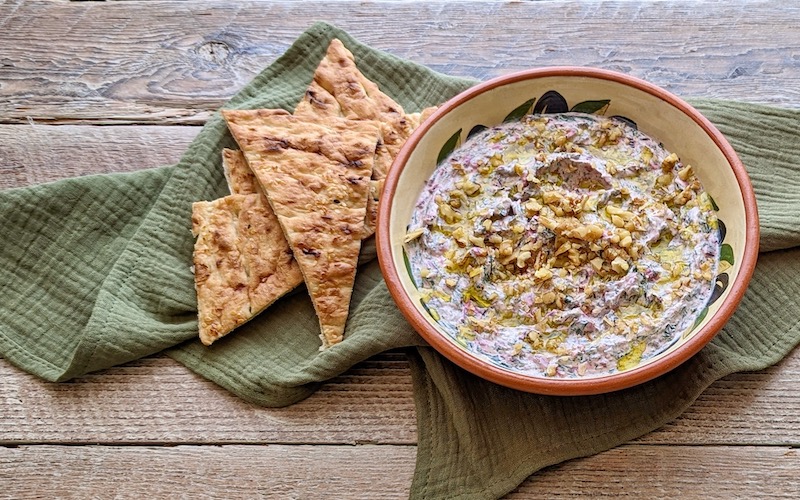

Fresh crisp beetroot leaves make a great addition to a salad or a Persian herb platter (sabzi khordan), but they tend not to be valued in Australia. They’re generally chopped off the beets and thrown out, so they’re usually not in great condition; but it’s surprising what a good soak in a sink of cold water can reveal. Rather than waste those wilted beetroot leaves and stems next time you have a bunch of beetroot, try this deliciously easy Persian dip, beetroot leaf boorani. For a great start to the meal, pour a glass of Latta Rattlesnake Contact Blanc with this dip, a delicious full-bodied blend of riesling, viognier, sauv blanc and gewürz from Owen Latta in the Victorian Pyrenees. Scroll down to the video and FAQ below to discover more about Persian cuisine. Use the beetroot roots to make borani laboo and, if you have a spare one, make easy Lebanese pink pickled turnips.
Serves 4 as a starter
In Sydney, you’ll find sangak at Sangak Bakery in Guildford. It freezes well: wrap tightly in plastic wrap, place in a freezer bag and freeze asap. To use, remove from bag and remove plastic wrap, wrap in aluminium foil and place in a 180°C oven for about 10 minutes, until warmed through, cut in half to serve. Refrigerate any leftover wrapped in the foil and toast the next day.
Share page on:








Boorani (sometimes written burani or borani) are Persian vegetable dips made with a tangy yoghurt base, they’re ideal for stimulating appetite and cutting through rich stews and other dishes.
Spinach is commonly used to make boorani and there’s a delicious eggplant version. I love the earthy flavour of this beetroot boorani, whether it’s made using the roots or the leaves and stems.
Boorani is great as a side dish or with bread as part of a mazeh (Persia’s mezze).
Iran’s most iconic bread, sangak is traditionally made on a bed of hot pebbles, giving it a distinctive look and chewy texture.